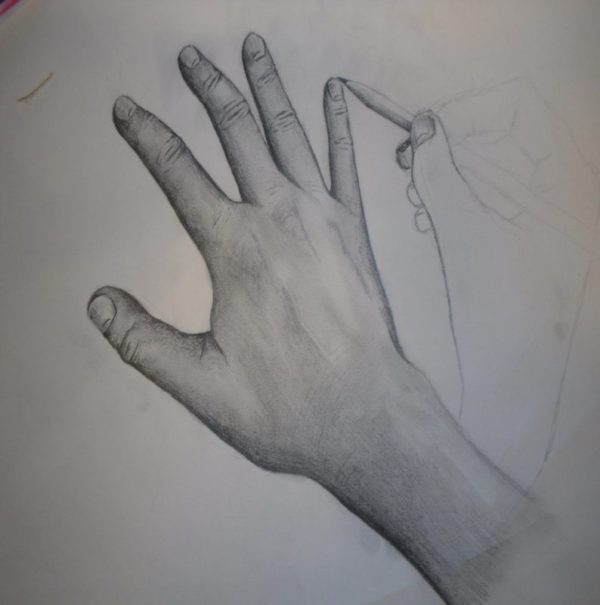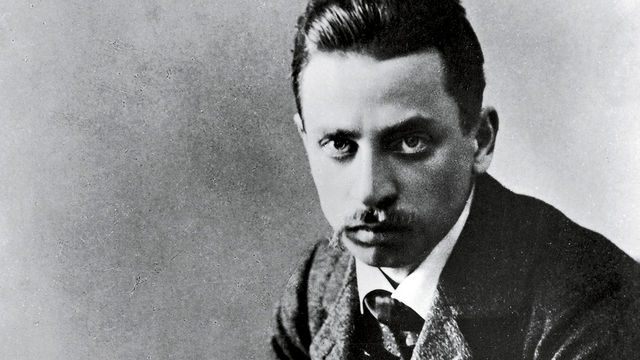In the following lesson plan T&W teaching artist Erika Luckert explores what Charles Darwin and Pablo Picasso can teach students about the revision process. She offers her thanks to Lucie Brock-Broido, who first introduced her to Picasso’s bull lithographs as a metaphor for revision.
Grade: 11
Genre: All
Download: Visualizing Revision
Common Core Standards:
- ELA-LITERACY.W.11-12.5: Develop and strengthen writing as needed by planning, revising, editing, rewriting, or trying a new approach, focusing on addressing what is most significant for a specific purpose and audience.
Lesson Objective:
- Student will visualize the revision processes and apply it to their own writing.
Guiding Questions:
- What is revision?
- How do writers and artists revise?
LESSON
Warm-up:
- Think, Pair, Share: Give students about two minutes to write down a description of how they usually revise their writing. Then, in partners, students share their revision processes with one another.
- Share with the class: Where did your partner’s revision process diverge from your own? Where was it similar?
Main Activity:
- Explain to students that writing is rewriting—that the bulk of what writers do is not getting down the first draft, but rather, reworking that draft until it evolves into a finished piece. The challenge is that revision is both the most substantial part of the writing process, and the most invisible part—we usually only see finished work! So, we’re going to examine two visualizations of revision processes to inspire our own revisions.
Visualization 1: Charles Darwin:
- Ask students if anyone has heard of Darwin’s On the Origin of Species.
Offer background information as needed: “On the Origin of Species (or more completely, On the Origin of Species by Means of Natural Selection, or the Preservation of Favoured Races in the Struggle for Life),[3] published on 24 November 1859, is a work of scientific literature by Charles Darwin which is considered to be the foundation of evolutionary biology. Darwin’s book introduced the scientific theory that populations evolve over the course of generations through a process of natural selection. It presented a body of evidence that the diversity of life arose by common descent through a branching pattern of evolution.” (Wikipedia)
It took Darwin 14 years, and many, many revisions, to reach the final version of On the Origin of Species. This visualization by data scientist and artist Ben Fry shows the revision process.
- Display visualization and play it for students, using the fast and slow settings. It may be helpful to explain the legend (first edition, second edition, etc.) to students to facilitate understanding. Ask students: What do you notice in this visualization? Draw students’ attention to the many additions that occur over time, and the subtractions too.
Read Fry’s artist note about the visualization: “We often think of scientific ideas, such as Darwin’s theory of evolution, as fixed notions that are accepted as finished. In fact, Darwin’s On the Origin of Species evolved over the course of several editions he wrote, edited, and updated during his lifetime. The first English edition was approximately 150,000 words and the sixth is a much larger 190,000 words. In the changes are refinements and shifts in ideas—whether increasing the weight of a statement, adding details, or even a change in the idea itself.
“The second edition, for instance, adds a notable “by the Creator” to the closing paragraph, giving greater attribution to a higher power. In another example, the phrase “survival of the fittest”—usually considered central to the theory and often attributed to Darwin—instead came from British philosopher Herbert Spencer, and didn’t appear until the fifth edition of the text. Using the six editions as a guide, we can see the unfolding and clarification of Darwin’s ideas as he sought to further develop his theory during his lifetime.” (Ben Fry, emphasis mine)
- Ask students: How does this compare to your own writing/revision process? What can we learn as writers from this?
Visualization 2: Pablo Picasso
- Ask students if anyone has heard of Pablo Picasso.
Give background information as needed: “Pablo Picasso (/pɪˈkɑːsoʊ, -ˈkæsoʊ/;[2] Spanish: [ˈpaβlo piˈkaso]; 25 October 1881 – 8 April 1973) was a Spanish painter, sculptor, printmaker, ceramicist, stage designer, poet, and playwright who spent most of his adult life in France. Regarded as one of the most influential artists of the 20th century, he is known for co-founding the Cubist movement, the invention of constructed sculpture,[3][4] the co-invention of collage, and for the wide variety of styles that he helped develop and explore. Among his most famous works are the proto-Cubist ‘Les Demoiselles d’Avignon’ (1907), and ‘Guernica’ (1937), a dramatic portrayal of the bombing of Guernica by the German and Italian air forces.” (Wikipedia)
Between December 5, 1945, and January 17, 1946, Picasso made a series of 11 lithographs (prints) of a bull, revising the image again and again.
- Show students the PowerPoint slideshow of Picasso’s Bull Lithographs. (The lithographs can also be seen here.)
- At each slide, ask students to describe the revisions that have been made between the versions of the bull. What changes/revisions do you see? Guide students to be specific in their descriptions.
- Show students the final slide, with all 11 lithographs.
- Ask students: How does this compare to your own writing/revising process? What can we learn as writers from this?
Revision Task
- Ask students to draw inspiration from either Darwin or Picasso, and make a radical revision to a draft that they’re working on. This works equally for creative writing (stories, poems) and critical writing (research essays, analytical writing, etc.).
- Students pick one of the following options:
Darwin Revision:
Darwin’s final version of On the Origin of the Species was 40,000 words longer than his first version. Find places in your current draft—at the beginning, in the middle, at the end—where you can expand. Make your draft twice as long as it is now. Challenge yourself to elaborate on everything that your draft contains, and to add new ideas too!
Picasso Revision:
Picasso’s final bull is just a few precisely curved lines, a dramatic change from the level of detail in his earlier versions. Find places in your current draft —at the beginning, in the middle, at the end—where you can cut. Make your draft half as long as it is now. Challenge yourself to remove all but the most essential parts, and to refine those parts until they say just what you want to say: no more, no less.
Closing:
- Invite students to select a revised passage to share with the class. Invite them to read the first draft and then the revision.
- What did you learn about your draft from this revision process?
Materials:
- First drafts of student writing
- Internet access to share Darwin Visualization
- Visualizing Revision Picasso PowerPoint
Multi-Modal Approaches to Learning: Verbal-Linguistic, Intrapersonal, Interpersonal, Visual
Author’s Note:
This lesson, like much of my teaching, owes a debt to Lucie Brock-Broido. When I was her student at Columbia, she used this series of bull lithographs as a metaphor for revision, and for our poems. She told us something that I was astonished to hear—that she loved revision far better than writing itself. And she helped us learn to love revising too, to see it as a creative act. I’ve been teaching this lesson, in varying forms, since that class with Lucie, and each time I talk about revision with a group of students, I think about how lucky I was to be one of hers. Lucie Brock-Broido passed away on March 6, 2018. When I sit down to write, I think about her bravery as a poet. When I stand in a classroom to teach, I think about her generosity and grace.
Image (top) via warosu.org/ic/thread/1740830



